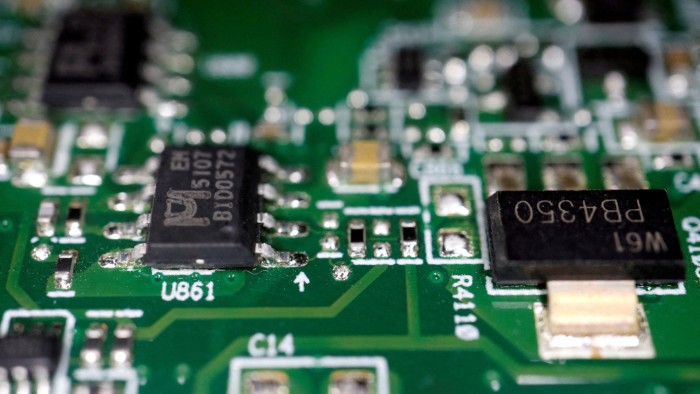Coming capex boom will require a shift by investors

Roula Khalaf, Editor of the FT, selects her favourite stories in this weekly newsletter.
The writer is chief administrative officer and managing partner at Fiera Capital
One day, the question of whether inflation-ridden economies experience a hard or soft landing will be settled.
Inflation will moderate, probably in the ballpark of between 2 and 2.5 per cent. Free markets will price in the real cost of capital as opposed to negligible levels that the world has gorged on during the last cycle. We’ll also see a period of detoxication as central banks and governments adjust to a new economic paradigm.
What then after this “Great Correction”? With inflation volatility under control, do we go right back to where we started? The journey to price stabilisation is being heralded as the end rather than the beginning of structural change. I couldn’t disagree more. All signs are pointing to the next decade or two being universally different from that which came before.
The return of normalised inflation that anyone over the age of 40 will remember will inevitably influence asset allocation as investors expect returns significantly above the risk-free rate. But it is the more persistent issues plaguing the developed world — more so than inflation — that will apply the greatest long-term drag on productivity and keep growth low. These include demography, climate change, rising healthcare costs, food security and the obsolescence of legacy infrastructure.
The golden thread that unites these challenges is that solving them will require unprecedented capital expenditure.
Russell Napier, the market strategist and economic historian, describes this as a “capex boom”. Others call it an incoming “productivity renaissance”. Whatever way it’s badged, the premise is that industries that enable us to tackle these mission-critical issues will ultimately attract seismic inflows of investment into physical assets.
Estimates from McKinsey & Company suggest that capital spending on physical assets will amount to approximately $130tn through to 2027, led principally by the three “Ds”: digitalisation, decarbonisation and deglobalisation.
But this figure does not account for more recent developments in energy-hungry and computational heavy fields such as AI and robotics, where demand for the capacity to store and exchange more data will overlap with capex requirements to upgrade global grid networks, harness renewable energy, extract resources to meet growing demand for batteries and modernise the west generally.
Forward-thinking investors with a longer-term outlook are already thinking about what this chapter will hold — not least because private capital will have a principal role to play in this age of formation that will dwarf previous smaller capex cycles that were broadly state-led.
Exposure to traditional physical assets that are fast becoming “stranded” in the energy transition and the greening of material supply chains are some areas where investors are expecting enhanced returns. Others include logistics supporting “nearshoring” of production facilities, data centres, battery production, the retrofitting of carbon-intensive buildings and utilities upgrades.
In some ways, this tilt to capex-ready industries is already bearing out in the breakdown in the traditional 60/40 portfolio split between bonds and equities. There is now a stronger emphasis placed on risk concentration. This means more interest in international smaller companies and overlooked emerging markets — but also private assets with a low correlation to stocks and bonds, such as agriculture and forestry, alternative real estate and renewable energy infrastructure.
How capital is deployed is equally as important as where capital is deployed. Active asset management will make greater strides than passive investment in a capex boom — particularly as the goal is to selectively invest in physical assets necessary to power the new economy as opposed to seeking a broad “catch-all” exposure.
The consequence is that, on public exchanges, broad indices may obscure the real winners of this supercycle while in private markets, there is a real bifurcation emerging between assets fit for the new economy and those that are being downgraded.
It will still take time for institutional investors and intermediaries to get accustomed to this shift. But concerns over international supply chain dependency, the case for refreshing infrastructure, and capitalising advanced industries, are fast becoming policy priorities.
When the inflation plane does eventually land, we’ll all open the hatch to a new and unfamiliar normal. And who will take priority? The investors with a head start, of course.
Comments